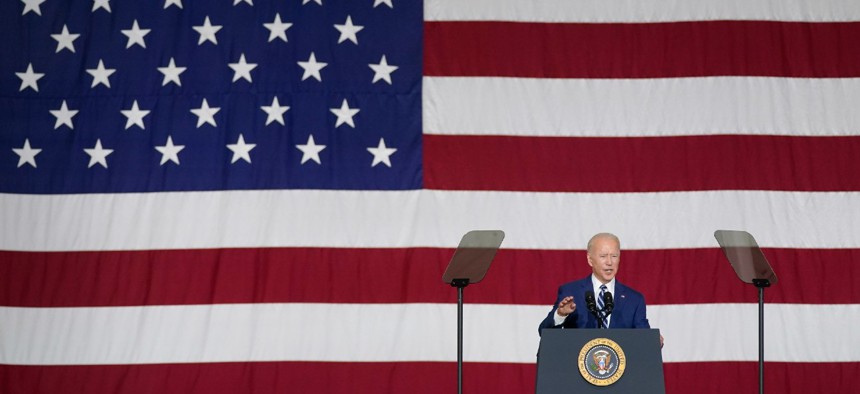Biden Ends Trend of Benefit-Cutting Budgets, But New Federal Workforce Initiatives Are Still Being Developed
Most of the workforce provisions outlined in the president’s first budget submission are vague references to policies that will be part of the forthcoming president's management agenda.
President Biden’s first full budget submission to Congress, which was released Friday, marks a distinct shift away from the benefit-cutting approach to federal personnel issues taken by his predecessor, but details of his own plans remain scarce, for now.
In each of his budget proposals, former President Trump pushed for a wide array of cuts to federal employees’ benefits, including making workers contribute more to their defined benefit pensions, reducing retirees’ cost of living adjustments, and reducing the rate of the return of the Thrift Savings Plan’s government securities (G) fund.
Biden’s fiscal 2022 budget proposal, which includes a 2.7% average pay increase for federal employees next year, unsurprisingly dispenses with Trump's benefit-cutting proposals, which were never implemented by Congress. But while it highlights all of the actions Biden's administration has already taken to “rebuild” the federal workforce, like rescinding Trump-era personnel policies and increasing the minimum wage of federal contractors, many of the administration's plans going forward are still being crafted.
Budget documents indicate that many of the specifics of the Biden administration’s workplace policies will come out with the release of the president’s management agenda later this year. In the meantime, officials highlighted work that’s underway by staff at the Office of Personnel Management and the Office of Management and Budget, and by agency chief human capital officers governmentwide.
“OPM is compiling and developing comprehensive guidance for agencies on hiring flexibilities and competitive hiring best practices to facilitate a talent surge into government,” the White House wrote. “This work includes developing regulations to make it easier to bring back former employees by allowing agencies to rehire at a grade commensurate with the experience achieved while working outside of government, rather than limiting such employees to the grade level where they were when they left.”
The budget also alludes to several other pending hiring initiatives, including pushing agencies to make better use of internship programs as a pipeline for younger job candidates to enter the federal workforce, and the development of a governmentwide assessment of federal hiring.
“The budget supports building additional capacity and capability for agencies to strengthen the workforce, recruit and hire talent, and ensure agencies can recruit specific technical talent where there are longstanding gaps,” the document states. “It requires [Chief Human Capital Officer] Act agencies to create and fund talent teams at the component level and to participate in or contribute to, as allowable, a centralized governmentwide hiring assessment support team to improve hiring outcomes for critical positions, including more technical or hard-to-fill positions, in particular.”
Biden’s proposal also reiterates that the Office of Personnel Management is studying how the successes of the maximum telework program, undertaken at the onset of the COVID-19 pandemic, can be leveraged to boost agency performance and employee engagement permanently. Several officials have said publicly that OPM has been working on the topic in recent months, and The Washington Post reported Monday that the guidance could come out as early as June.
“The CHCO community has collaborated to determine how to move formerly in-person work to the virtual environment [during the pandemic],” the budget states. “An overwhelming majority of respondents to the 2020 Federal Employee Viewpoint Survey reported a high level of ability to meet customers’ needs, as well as agencies’ sustained performance and quality of work. OPM, GSA and OMB will capture best practices, convene diverse stakeholder groups inside and outside of government, evaluate options, and develop guidance to assist agencies to adapt as the country continues to emerge from the COVID-19 pandemic.”
NEXT STORY: ‘The Premonition’: Two Takeaways for Government








